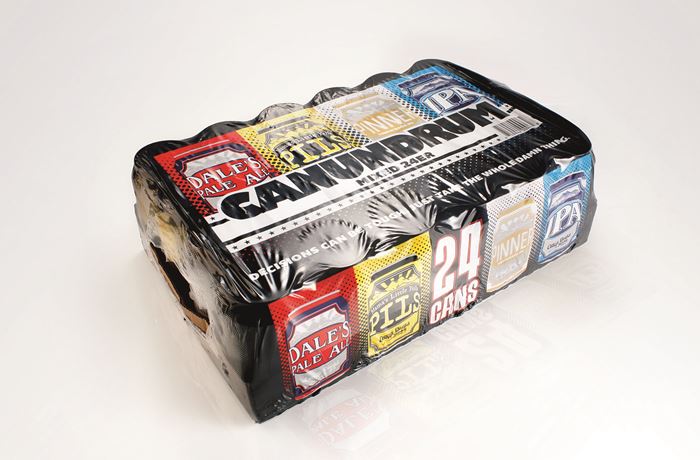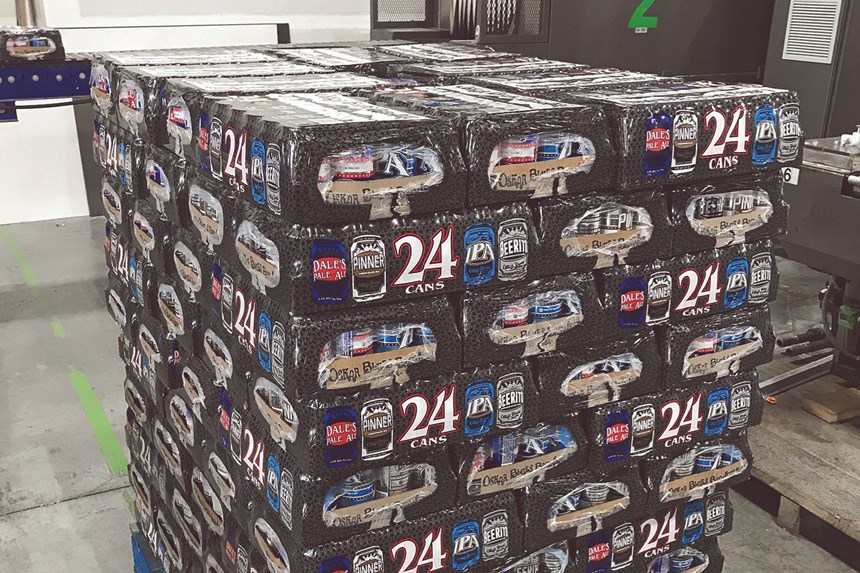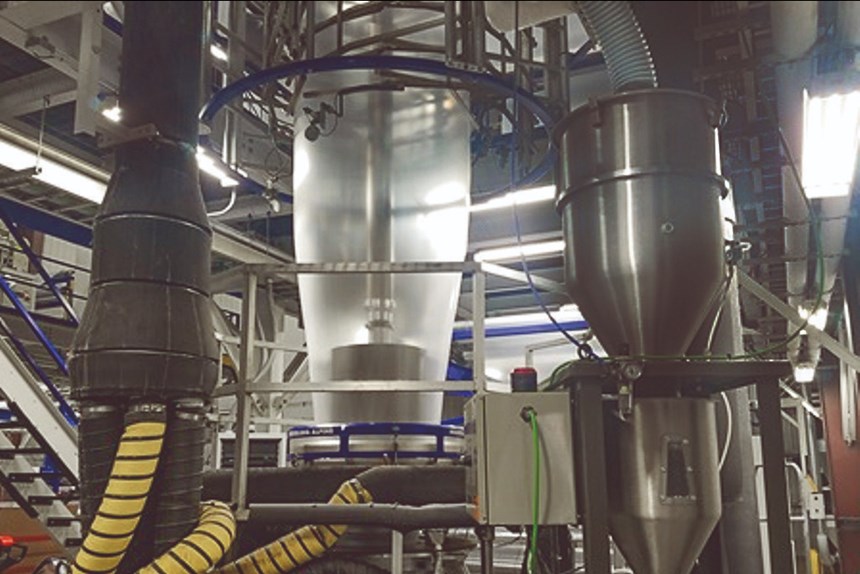All-PE Printed Collation Film Replaces Cardboard for Craft Beer Packs
Berry, Dow collaboration helps boost sales for beer maker while cutting costs and offering more in the way of sustainability, branding and shelf appeal.
Processing giant Berry Global has collaborated with Dow Packaging and Specialty Plastics to produce what’s billed as the first all-PE printed collation shrink-film packaging for a craft-beer brewer in the U.S. The beer maker, Oskar Blues, is using the novel package instead of corrugated cardboard on its 24-can variety cases. It says the switch has resulted in a 300% increase in business, slashed costs, and improved its sustainability, branding and shelf appeal.
The craft-beer market is steadily shifting from glass bottles to cans to cut shipping and manufacturing costs, notes Ed McDonough, technical lead for the project for Berry Global, Evansville, Ind. He notes that the all-PE package is fully recyclable and reusable and has a lower carbon footprint than printed corrugated paperboard. Says McDonough, “I believe that the advantageous economics is married to sustainability, and this market—dominated by millennials—is very much into that.”
Oskar Blues, Longmont, Colo., part of the CANarchy Craft Brewery Collective—the ninth largest craft brewer in the U.S.—launched the new packaging in 2017. Says Jeremy Rudolf, operations manager for CANarchy Craft Brewery Collective, “Moving to collated shrink packaging for our 24-can variety packs results in business growth, sustainability benefits and strong shelf appeal. Our primary focus is the quality of the beer we brew, but we also continuously evaluate options to evolve in other areas and enhance our sustainability profiles with innovations like this new packaging solution.”
The three-layer blown film furnished by Berry serves as secondary package for the craft brewer. It wraps corrugated trays, replacing previous shrink-wrapping that held two 12-pack cartons together. Like the previous corrugated cardboard package, the film features Oskar Blue’s branding and design, maintaining shelf appeal.
The brewer says the switch has yielded 40% cost savings, reduced usage of secondary packaging by 64%, and has resulted in 73% fewer trucks delivering packaging materials to Oskar Blues. The company expects to see 46% in energy savings and 51% reduction in greenhouse gas emissions based on an environmental-impact assessment by packaging consultancy Allied Development Corp., Burnsville, Minn.
While certain collation films are shifting to five layers, Berry’s McDonough maintains the three-layer structure is sufficient since the application does not require barrier or tie layers. Adds Ritika Kalia, end-use marketing manager at Dow Packaging & Specialty Plastics, Midland, Mich., “Three-layer film is still the predominant technology; however, we are seeing some film converters starting to explore five-layer structures, especially inother geographies such as Europe.”
While McDonough will not reveal the exact PE grades used for this application, he notes that printed shrink film requires low haze, cutability, shrinkability, and sealability. As a result, the layers are all composed of various PE blends, including HDPE and LDPE, L/LLDPE and mLDPE, which is standard industrywide for printed shrink film used for water-bottle packaging.
Berry runs three-layer coextruded blown collation shrink film made of various PE blends to achieve low haze, cuttability, shrinkability, and sealability. Reverse printing on the multilayer film packaging is accomplished with a state-of-the-art 10-station flexographic printer with ECG (Extended Color Gamut) technology, which enables multiple colors from a base of only three colors, for sophisticated artwork that matches the quality of a photograph, according to Markay Doane, Berry Global’s product-line director. He says, “The ability to print on collation shrink film is essential for applications where branding is so important. More and more companies see its potential, given the opportunity to achieve cost and sustainability goals while still capturing consumer attention with strong branding and shelf appeal.”
According to Dow’s Kalia, Oskar Blues’ printed shrink-wrapped mixed case is indeed a first for the U.S. craft-beer industry. “Other arrangements, including four-packs in similar packaging, are becoming common in North America, and printed shrink-wrapped cases are already common in other regions, including Europe and Latin America.” Kalia notes that now that printed shrink packaging is possible, the Dow team believes that more brand owners will move their products to this type of packaging to take advantage of the cost, manufacturing and sustainability benefits.
Related Content
Why Are There No 'Universal' Screws for All Polymers?
There’s a simple answer: Because all plastics are not the same.
Read MoreHow to Select the Right Cooling Stack for Sheet
First, remember there is no universal cooling-roll stack. And be sure to take into account the specific heat of the polymer you are processing.
Read MoreThe Importance of Barrel Heat and Melt Temperature
Barrel temperature may impact melting in the case of very small extruders running very slowly. Otherwise, melting is mainly the result of shear heating of the polymer.
Read MoreHow Screw Design Can Boost Output of Single-Screw Extruders
Optimizing screw design for a lower discharge temperature has been shown to significantly increase output rate.
Read MoreRead Next
Beyond Prototypes: 8 Ways the Plastics Industry Is Using 3D Printing
Plastics processors are finding applications for 3D printing around the plant and across the supply chain. Here are 8 examples to look for at NPE2024.
Read MoreSee Recyclers Close the Loop on Trade Show Production Scrap at NPE2024
A collaboration between show organizer PLASTICS, recycler CPR and size reduction experts WEIMA and Conair recovered and recycled all production scrap at NPE2024.
Read MorePeople 4.0 – How to Get Buy-In from Your Staff for Industry 4.0 Systems
Implementing a production monitoring system as the foundation of a ‘smart factory’ is about integrating people with new technology as much as it is about integrating machines and computers. Here are tips from a company that has gone through the process.
Read More

























